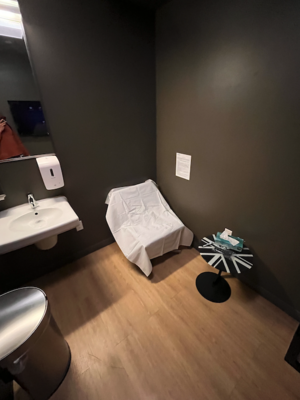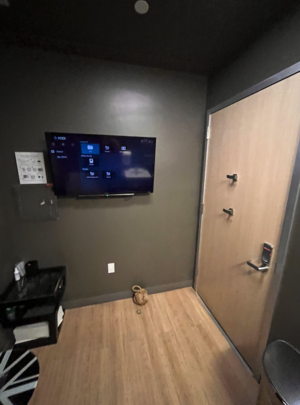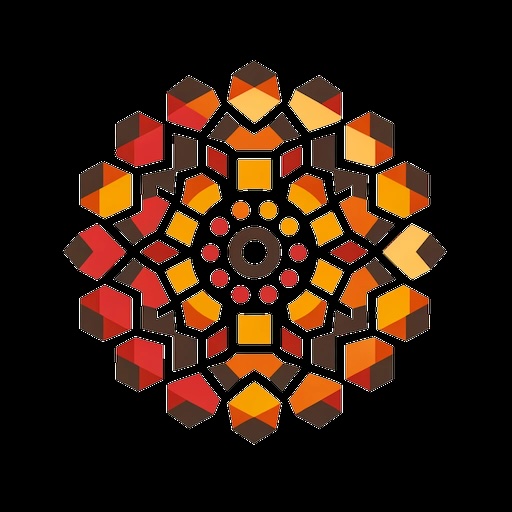IVF: Difference between revisions
| Line 99: | Line 99: | ||
Through this entire process, the male part is quite easy. You pretty much just abstain from masturbation or sex for 2 days and then wank in a cup. Not even that many times. At the initial screen they will tell you the motility and the number. They'll do some arithmetic with this and give you a score. The score looks like it was built for people with fertility issues, which is understandable, considering the setting. Spring's chart says they can work with 20M or higher; the WHO says it can range from 20M to 200M depending on the day; I had 75M. | Through this entire process, the male part is quite easy. You pretty much just abstain from masturbation or sex for 2 days and then wank in a cup. Not even that many times. At the initial screen they will tell you the motility and the number. They'll do some arithmetic with this and give you a score. The score looks like it was built for people with fertility issues, which is understandable, considering the setting. Spring's chart says they can work with 20M or higher; the WHO says it can range from 20M to 200M depending on the day; I had 75M. | ||
== | == The Process Outlined == | ||
The short version of how everything works is that: | The short version of how everything works is that: | ||
Revision as of 18:29, 16 November 2024
Julie and I have mutations in a gene related to hearing loss. We found this out as we did carrier screening to prepare for our planned pregnancy. As we later found out, carrier screening is commonly offered to new parents. It struck me that it was a bit late by the time you showed up at the ob/gyn, but if you were there before week 12, you have a lot of time to terminate and try again.
In our case, both Julie and I are in our late 30s and so we decided to run this through anyway since failed pregnancies for aneuploidy etc. are high cost in time. This ultimately paid off in that it discovered this condition we have, we were able to select an appropriate embryo, and we are now 20 weeks into a pregnancy.
The Players
- Julie and me, late thirties prospective parents
- Spring Fertility, our IVF clinic
- Orchid Health, our embryo genome sequencing and diagnostic service[1]
- Nebula, a pay-to-sequence genome sequencing service
The Cost
Each IVF cycle costs about $25k to run with Spring. These costs include the drugs[2], the tests, and the visit for egg extraction.
With Orchid, they were willing to do all embryos for $12500. The pricing is better for younger people, since they will produce a lot of embryos each run. In our case, we had 4 viable embryos each time, and we were early to the program, so we paid a little less.
Detection
Once we were doing IVF, I knew I wanted to use the best tech in the business and that's whole genome sequencing (WGS) of embryos. This is also a data and informatics kind of thing, so I decided that I wanted to do as much of it as possible that I could. Consequently, we were sequenced in the following ways:
- A mouth swab sent to us from Orchid
- A mouth swab from Nebula
- Either a blood draw / mouth swab at our IVF clinic
Theoretically, I had the data from Nebula first, but being employed at the time I found it too time consuming to actually perform the whole bioinformatics pipeline. We started the process with Spring a little earlier and we were informed by the genetic counselor there. We provided Orchid with the whole genome sequences from Nebula and we did the mouth swabs from them in case they needed it.
The other thing I'm not mentioning here because it's apparently a very straightforward process is what's called PGT-A or detecting aneuploid embryos. The most well-known form of disorder here is Down's syndrome which is trisomy 21 or the existence of three copies of chromosome 21 instead of the normal two copies of every chromosome except the sex chromosomes. With a whole genome sequence, this is obvious, of course.
Getting Embryos Sequenced
Strictly, you don't need to get your embryos sequenced in order to identify a particular congenital condition. Our case is a particularly good situation for Pre-implantation Genetic Testing for Monogenic Disorders (PGT-M)[3] to work because it's a single gene single error sort of situation. We could probably have gotten away with that. However, receiving the whole genome does give you quite a few advantages:
- You can do polygenic risk scoring
- You can do post-hoc disorder detection with the data
- It's just data
The last one is sort of important to me because I don't have access to a lab and the sophisticated equipment required in order to perform chemical analyses. What I do have is access to a boundless amount of resources and my own skill once the problem hits the virtual space.
Onboarding Spring / Orchid
All labs have protocols[4] for how they do things. For the cells to be biopsied so that they can be sequenced, they need a specific protocol. In order for this to be done, Orchid had to talk to Spring and Spring had to agree to do it their way. Here's the order of things that happens:
| Service | Event |
|---|---|
| IVF Clinic | Initial consultation - why, what you're looking for, disclaimers, etc. |
| IVF Clinic | Carrier screening, fertility tests, etc. |
| IVF Clinic | Genetic Counseling |
| PGT Service | Initial consultation - why, warnings, etc. |
| IVF Clinic / PGT Service | Onboarding with each other |
| IVF Clinic | Cycle control drugs |
| IVF Clinic | Egg expression drugs |
| IVF Clinic | Egg retrieval and Sperm retrieval |
| IVF Clinic | Fertilization |
| IVF Clinic | Growth |
| IVF Clinic | Biopsy |
| IVF Clinic | Embryo freezing |
| PGT Service | Receives biopsy |
| PGT Service | Sequences |
| PGT Service | Provides summary and monogenic info |
| IVF Clinic | Talks to you about embryo selection |
| IVF Clinic | Implants embryo |
| IVF Clinic | Post-implantation ob/gyn follow up |
| Ob/gyn | Takes over at 12 w |
Now, because we were the first to use Orchid with Spring the onboarding process took about a month. This was principally because WGS for PGT is newer technology and fertility clinics, in general, live and die by the success of their process. If they have lower successful implantations, then they'll get a reputation. So they'll want to ensure that the lab they use is actually decent, both in aneuploidy detection and in the detection of these monogenic conditions.
The impression I got from the hesitation was that Spring was not entirely sold on this process at the start. Nonetheless, when they were on board, the process was as smooth as can be. Our doctor there, Dr. Pasternak, was great for us to work with and was quite well-informed on things.
Initial Tests


Julie had to have her blood drawn and had an ultrasound done at Spring. The latter gave us a rough idea of the number of follicles she had, and the rough number of eggs we should expect.
Through this entire process, the male part is quite easy. You pretty much just abstain from masturbation or sex for 2 days and then wank in a cup. Not even that many times. At the initial screen they will tell you the motility and the number. They'll do some arithmetic with this and give you a score. The score looks like it was built for people with fertility issues, which is understandable, considering the setting. Spring's chart says they can work with 20M or higher; the WHO says it can range from 20M to 200M depending on the day; I had 75M.
The Process Outlined
The short version of how everything works is that:
- They pull the eggs from the woman
- They put some sperm inside the egg under a microscope, fertilizing it
- They wait for the resulting embryos to grow for 5-6 days
- The outer shell of cells, called the trophoblast, from the embryo (which is in its blastocyst stage) has a little taken out
- This is sent to Spring
- Spring then sequences the trophoblast cells
Okay, this all makes sense. There's a catch in very rare cases in that the trophoblast (which goes on to grow into part of the placenta) can end up not being the same DNA as the rest of the embryo. This would suck because your WGS would not be of the child you'll eventually have. This is a limitation of the entire thing but it is supposed to happen in ~2% of cases so we thought it wasn't worth worrying about since you can't act on it: you won't know if this happened until after you sequence the child another way - which is way more invasive until they're born.
Drugs
Julie had to take a bunch of drugs at various points in the process.
- Aygestin: to adjust the cycle
- Menopur: to stimulate egg maturation
- Gonal-F: to stimulate egg maturation
- Cetrotide: to prevent the body from releasing the egg
- Leuprolide: activates final maturation and ovulation
- Novarel: activates final maturation and ovulation
The first time we did this, we didn't have to use Aygestin since we could just time things. Every time after that
Footnotes
- ↑ Our friend Ben is Head of Engineering here, which definitely plussed up my impression of their competence by a large amount
- ↑ The actual pharmacy was Alto but Spring has a deal where you pay them a fixed amount and they handle the variable part of it with Alto
- ↑ The way this works is that they biopsy (take out) a few cells from your embryo, then they amplify the DNA from those using DNA replication techniques, and then they see if the DNA contains the flawed gene. As you can imagine, the DNA amplification process introduces errors, so they use quality control techniques like using the parental DNA to follow sections of the genome as it travels through in a process called linkage analysis. If the amplification introduced an error, we'd be surprised if it preserved the rest of that section.
- ↑ The precise specifics of each action a lab does (egg retrieval, freezing, sampling, etc.), the algorithm they follow, is called the protocol.
